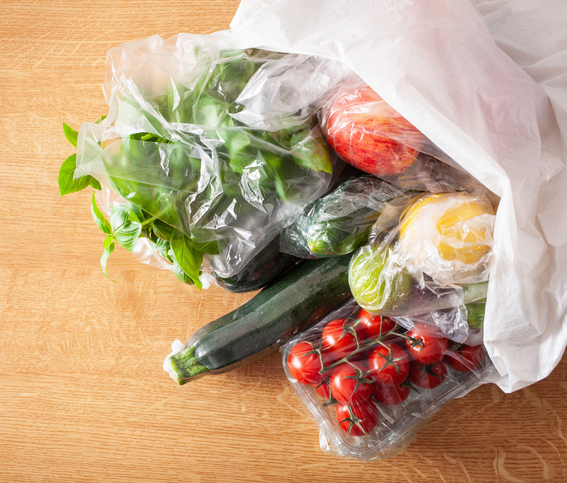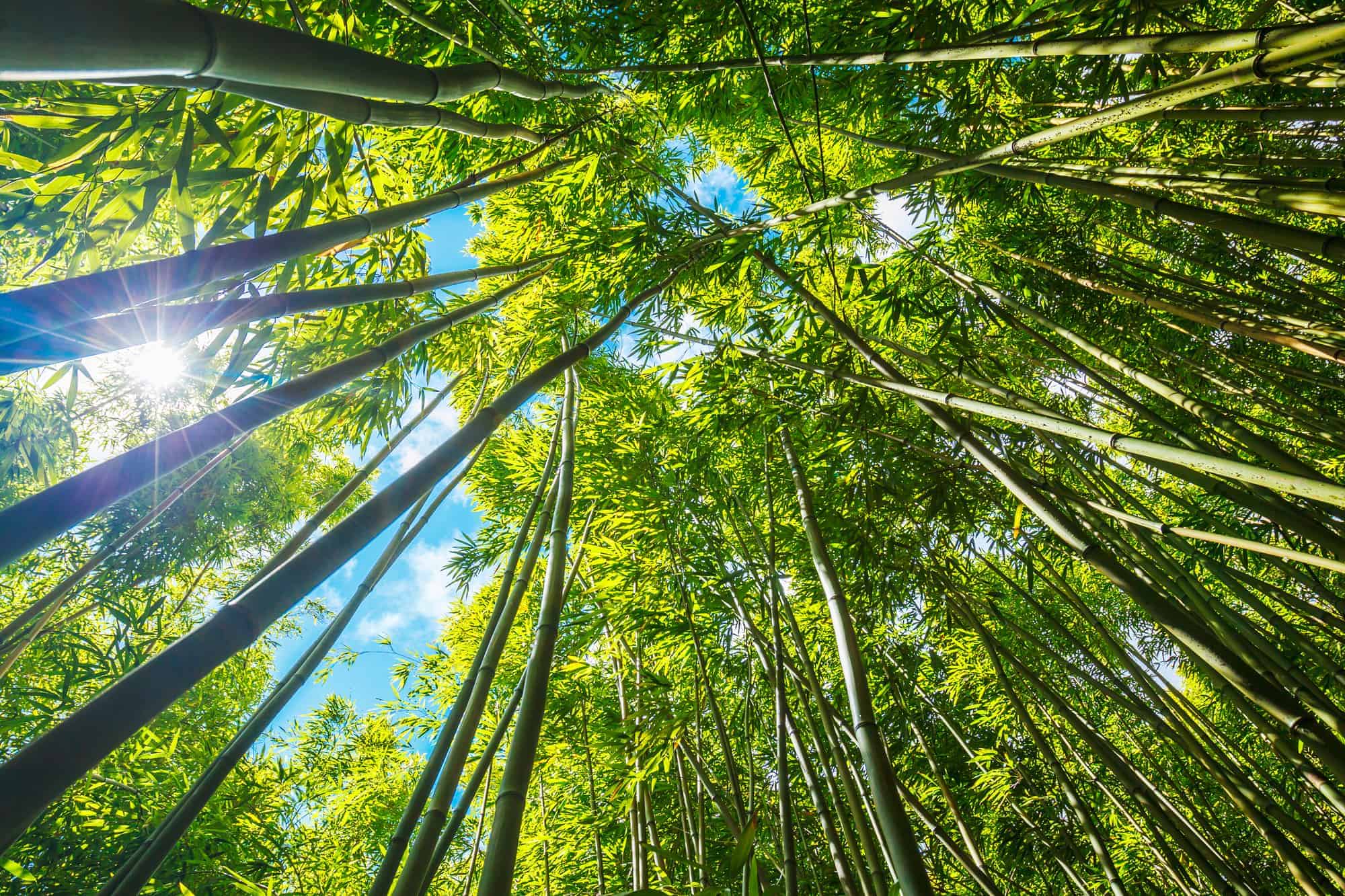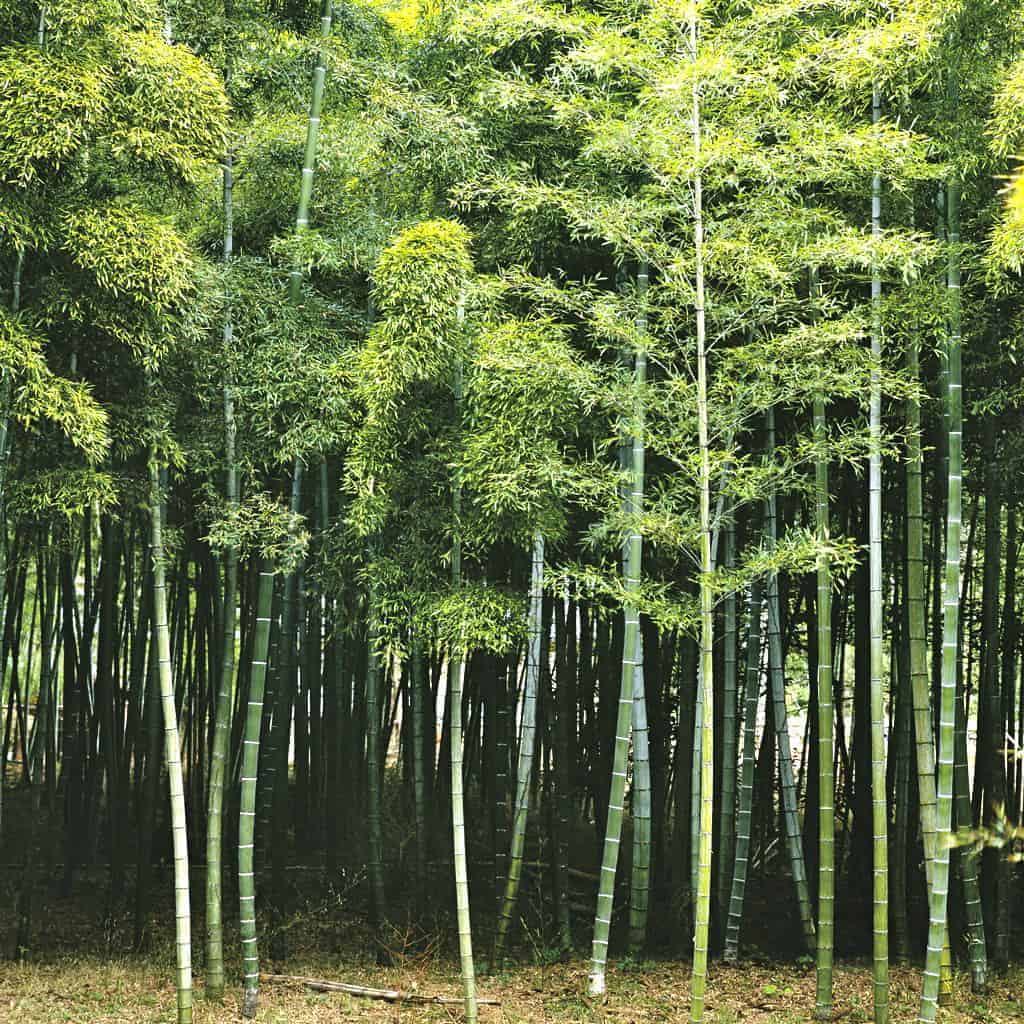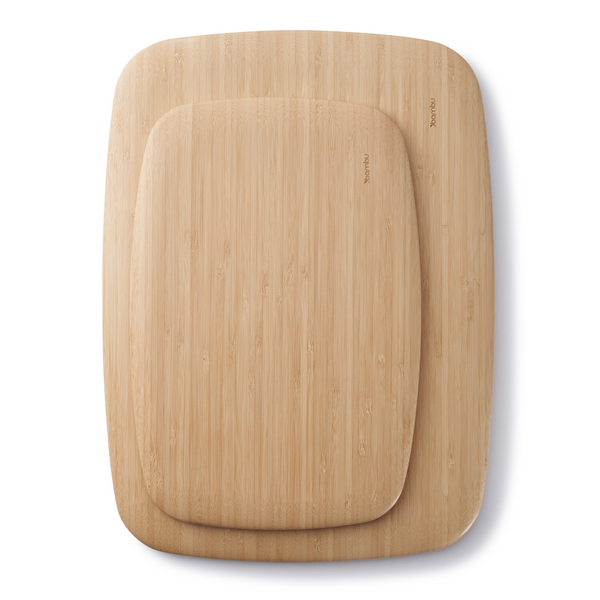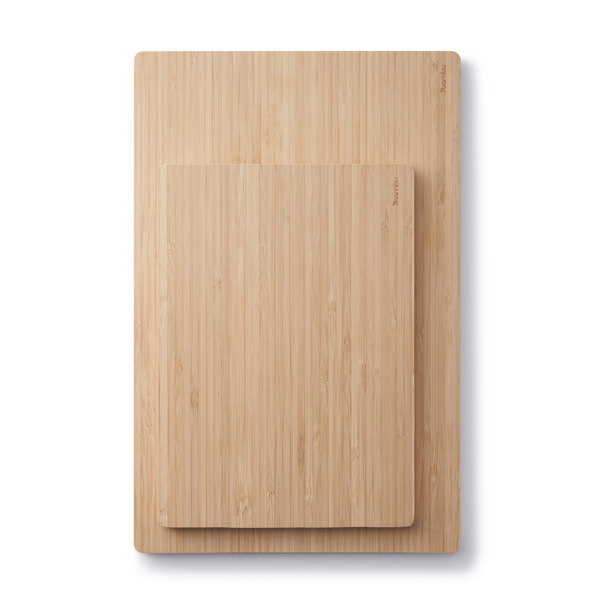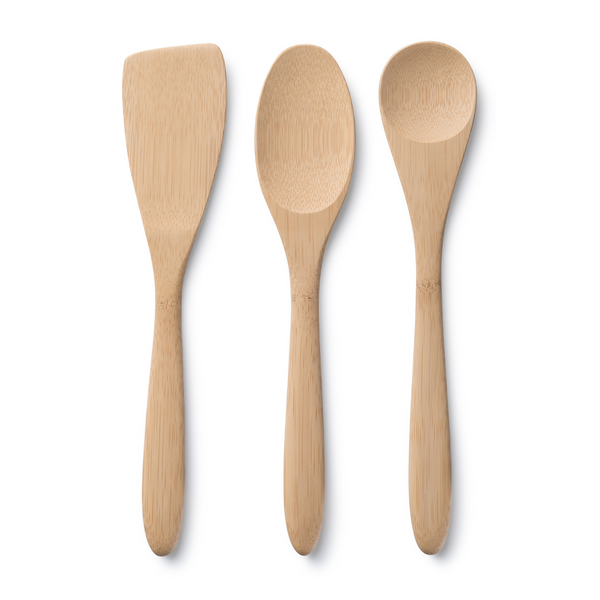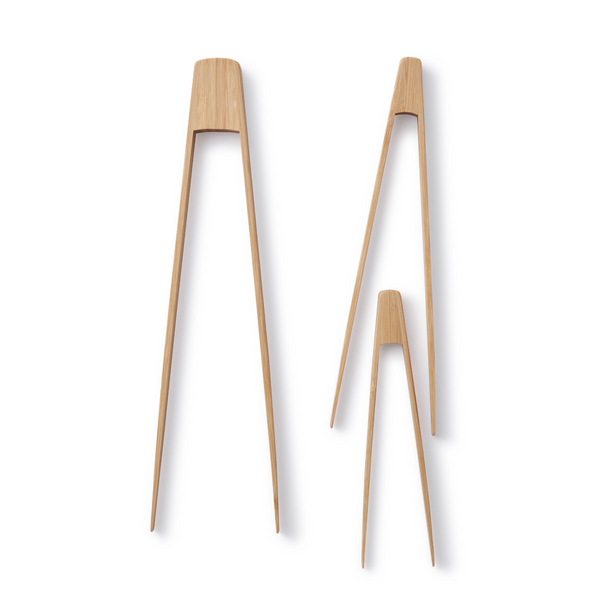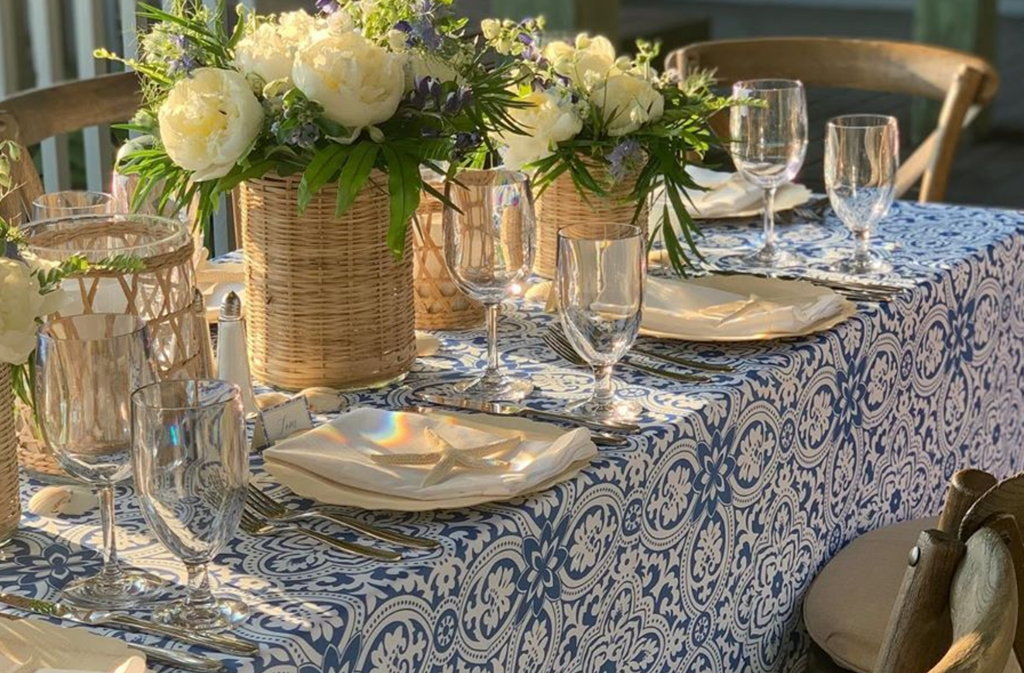Bamboo is a remarkable renewable resource for everyday products like kitchen utensils, cutting boards, pot scrappers and disposable plates. You could say bamboo is the ‘poster child’ of renewable materials for its versatility and range of application. However, as with any material, there are varying degrees of quality that we would like to steer you to protect your family from unneeded contaminants. So when it comes to bamboo, how and where it is sourced is one primary factor.
Mamavation has helped consumers with topics like what is the safest cookware, the best non-toxic baby products, and the safest small kitchen appliances. now join us as we explore the quality of bamboo and give you suggestions on our favorite brands & products in the kitchen.
Disclosure: This post contains affiliate links.
Bamboo: Centuries-Old Material For Modern Non-Toxic Needs
Bamboo is a centuries-old material and used by over one half of the world’s population for applications as varied as food, shelter, fuel and clothing and more. People have been discovering the beauty of bamboo in many new uses and new forms previously not imagined. Today, even toilet paper and tissues are made with some portion of bamboo fiber. It is a wonderfully versatile, remarkably renewable resource.
There are more than 1200 different species of bamboo. The most common species used for many of the products in the marketplace is Moso bamboo. China is the world’s largest source of bamboo where it grows mostly in the wild versus on farms or plantations. The ‘bamboo belt’ extends along the Eastern seaboard and inland across four (4) provinces.
How Bamboo Is Harvested
Harvesting bamboo is a cottage industry providing individual farmers with a source of income. During the Spring season, harvesting is halted to make room for and not damage the new shoots. These young Spring shoots are for allocated for food. Bamboo shoots are a common ingredient in Chinese cooking.
Farmers lease the land from the government and commonly harvest the bamboo culms using simple hand tools. The bamboo grows quickly and can be harvested within 3-5 years. Bamboo needs no replanting and requires less water than other stands.
The outer bark or skin on the bamboo culm is silica which protects the culm from pests. Skin is a more appropriate term instead of bark, because technically, bamboo is a grass. It is the fastest growing grass in the world with some species growing up to 3 feet a day. With bamboo, you can literally watch the grass grow.
Not All Bamboo Quality Is The Same
Not all bamboo quality is the same. Nor are all bamboo products the same. What you buy can vary dramatically. Several factors can influence the quality of the material and the final product. For instance, what month the bamboo was harvested, and how it was handled. Or how the bamboo was cured can influence the final outcome, as well.
Pest can become a problem. The silica skin protects the culms when they are growing. However, as soon as it cut, the inner core is exposed to pests. The bamboo beetle is the most common pest and they feed on the sugars of the bamboo and can burrow into the culm. The curing process usually kills the pests, but the bore holes the pests create can remain along with the tiny carcasses.
Maintaining moisture control is paramount when working with bamboo. If the moisture content is too high, or the drying too rapid, the bamboo will split or warp. This will compromise the quality of the product. Before bamboo can be put into production, it must be cured in a controlled environment.
Additional factors that influence the integrity of the material can be where was the bamboo harvested from, what time of year was the bamboo was harvested, and how much time between harvest and production.
15+ Kitchen Products Made From Organic Bamboo
Over the past couple of years, I’ve switched over to more bamboo products in the kitchen. It does a good job of replacing things that are made from plastic-like cutting boards, kitchen utensils, etc. Not only are these products exposing your family to less contaminants, but they are also nicer to look at. And they photograph well too!
We like bamboo products from bambu because they pay close attention to the details. None of their utensils are made with glue, and they don’t use lacquer coatings on any of their products. Plus, they go the extra step of securing only the highest quality bamboo available and the only bamboo that is certified organic. The organic certifying process involves an extensive review and documentation of the entire harvest and production process. bambu was the first company to have its bamboo source certified since its first audit in 2007.
Bamboo Cutting Boards
Plastic cutting boards are a thing of the past. They used to contain chemicals like triclosan to kill bacteria. That sounds nice in theory, but chemicals like triclosan are linked to an increase in antibiotic-resistant bacteria. Antibiotic-resistant bacteria infects millions in the United States every year.
If you are worried about cutting meat or poultry on a bamboo surface, stop! You are more likely to contaminate yourself using plastic than wood. That’s because when properly washed the bacteria on bamboo either wash off or sinks down into the wood grain where it dries out and dies. Plastic not only exposes your family to hormone-disrupting chemicals, but it’s likelier to spread antibiotic-resistant bacteria.
Cutting boards especially can vary in quality. These are created by gluing similarly sized strips together and then sanding usually finished with a coating. You will want to look for color consistency. The strips should match well. What you can’t see is the glue. And how much and what quality of the glue is used. Cutting boards made from small squarish pieces use a lot of glue. The quality of glue can vary widely and the source unknown. This is where company reputation makes a difference. Material selection is a critical component in the overall look and consistency of the cutting board. Here are some suggestions.
Bamboo Kitchen Utensils
Did you know that black plastic utensils could be leaching heavy metals and hormone-disrupting chemicals? I switched to bamboo kitchen utensils shortly after reading that study. Utensils have a different problem. Until recently, bamboo cooking tools were cheap, ugly, and similar to every other bamboo tool. Where they lacked in quality, they made up for in lacquer coating.
Lacquer coating is often used to mask the inconsistencies in material, hide glue lines and coat the utensil in a moisture proof, petroleum-based coating. For years, manufacturers have been churning out high volume, low quality, kitchen utensils and coating them in lacquer. When these utensils are used in high-temperature liquids or put in the dishwasher, the lacquer can chip off and/or leech into your foods. Some bamboo kitchen utensils are made by gluing the thin strips of bamboo, and then coating them with lacquer! That’s a double whammy of glue and lacquer. Ouch! Here are our suggested product free from lacquer and glues:
Disposable Cutlery, Flatware, Bowls & Pot Scrapers
There are several other type of products available to you in organic bamboo like sporks, disposable cutlery, bowls and pot scrapers. Here are more products we recommend:
- Sporks from organic bamboo
- 24 Piece Veneerware disposable cutlery from organic bamboo
- Condiment bowls, set of 4
- Bamboo Pot Scrapers
Disposable Plates
Discovering that lots of disposable plates are coated with persistent hormone-disrupting chemicals like PFAS, switching to Veneerware® made of bamboo is wise. Veneerware is more pricey, but void of things that could disrupt your hormones.
- 9-inch square Veneerware, 24 pack
- 9-inch round Veneerware, 24 pack
- 7-inch square Veneerware, 24 pack
Bamboo is a sustainable material that can be used for many kitchen products to replace plastic in your home. These switches bring you back to basics and avoid hormone-disrupting chemicals.


